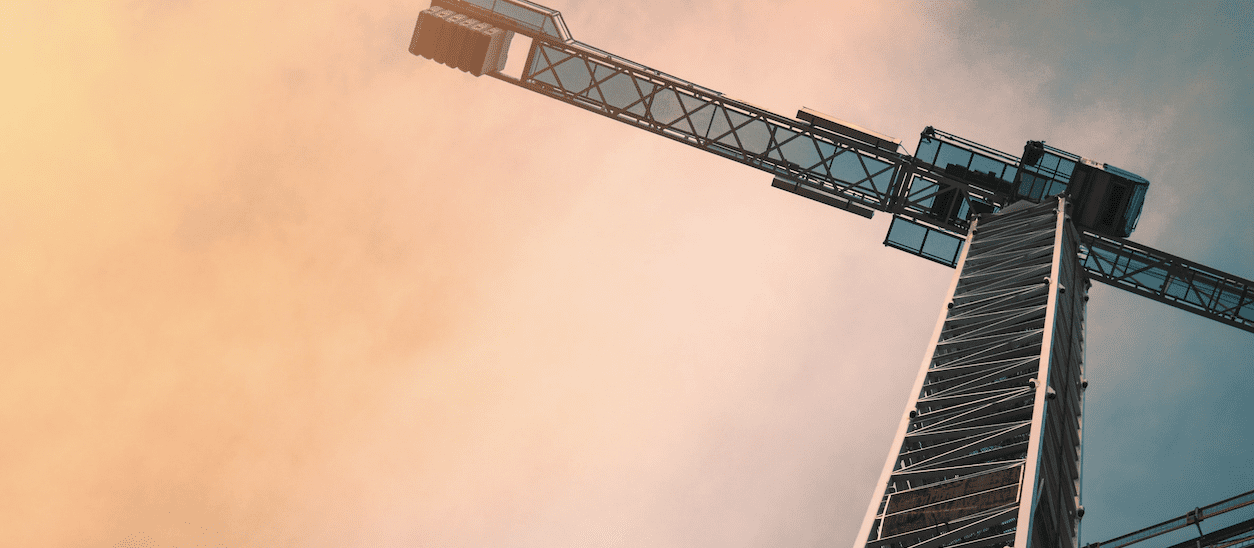How construction technology is driving the UK economy.

The UK economy is nose-diving down a rocky road due to several reasons ranging from rising energy costs to the lingering aftermath of the Covid-19 pandemic. According to the Office for National Statistics, business investment fell by 2.5% in the third quarter of 2022 alone, whilst more consumer-related factors like mortgage rates saw a 0.5% increase from 3 to 3.5%, adding to nationwide economic instability.
The construction industry makes up a significant chunk of the UK economy, valued at $448.8bn in 2021. However, it has not been immune to the economic hardship facing the country. Recent hardship has challenged industry leaders to think outside the box to increase building efficiency and boost low profit margins across the sector. The rapid digital transformation and evolution of technology available to construction workers may provide some relief for the UK’s economy by offering new and improved ways of working.
TECHNOLOGY WILL HELP EASE PRESSURE ON THE INDUSTRY
UK construction has historically played a vital role in safeguarding and improving the health of the economy, and accounted for around 6% of the total economic output in 2019. More recently, however, it has come under some strain with hundreds of companies closing down each month due to rising material costs, labour shortages, and disruption to supply chains. Increasingly available digital technologies, like cutting-edge tools, specifically Augmented Reality (AR) for example, are offering construction teams ways to fine-tune building methods and lower project costs. The adoption of the latest technology in construction will ultimately keep control of cost inflation and streamline manual processes. It will also ensure projects are delivered in a timely manner and within budget.
DIGITAL TWINS PROVIDE CONSTRUCTION PROFESSIONALS WITH A PROJECT OVERVIEW
Let’s explore how exactly emerging technologies are being used today.
Digital twins are a perfect case in point, allowing construction professionals to create a digital version of their project and interact with it as the real structure is built. The ability to monitor a structure in real time is invaluable in construction as it allows field engineers on the ground and teams working offsite to communicate and share valuable insights into projects as they unfold. This proactive surveying helps to eliminate instances of reactive, energy intensive and costly rework (redoing work due to errors), by uncovering important data about structures and improving the analytic abilities of Building Information Modelling (BIM), a pillar of modern-day construction. In turn, eliminating rework alleviates financial pressure and cuts lengthy project timelines. This not only improves efficiency and productivity, but also reduces unnecessary costs, which can be put back into the economy.
STREAMLINE PLANNING AND VISUALISE MODELS WITH AR TOOLS
Another growing technology that is reducing construction costs is AR. Capable of being used throughout the entire lifecycle of a project, AR-enabled tools can streamline planning and operational processes by giving construction teams the ability to visualise holograms of 3D models in real time and compare structures against them, enhancing both efficiency and accuracy down to as much as 5 millimetres using the latest Engineering-Grade AR tools.
Working in tandem with innovations like digital twins and AR, LiDAR is another evolving technology that allows construction professionals to make accurate measurements. An acronym for Light Detecting and Ranging technology, LiDAR works by emitting a laser from a source or transmitter that is directed by the user onto an object. It then reflects off back to a receiver and the time of flight or TOF determines the distance.
CURRENT INNOVATIVE TECHNOLOGIES ARE JUST THE TIP OF THE ICEBERG
These are just a few examples of the innovations we are seeing but the list goes on and there will be more to come as currently available tools are improved while the adoption of technologies still in their infancy within the sector grows. The underlying trend we are seeing across the industry is the increased digitalisation of processes and improved capacity to share information across different teams in real-time.
With more accurate data, available at the touch of a button, construction teams are better equipped to predict issues like inaccuracies when building that can lead to mistakes and unnecessary costs. More and more hardware incorporating the latest budding technologies like AR is becoming available and the collaborative software to gel it all together is following suit.
If the sector is to save money and aid the UK’s finances, implementing the latest technology into construction is a must. The sector has traditionally been slow to adopt new technologies, slowed by a lack of investment due to industry-wide low profit margins however as already-proven technologies like AR are being picked up and further R&D provides greater insights into the potential ROI we are seeing an uptick in new game changing technology.
Contemporary construction is already harnessing the powers of digital innovations like Building information Modelling and it’s a case now of building on this progress and taking things to the next level by amalgamating different software and tools. While investments in new technology will cost the construction industry in the short-term, it’s a crucial step in creating a more resilient future for the industry and UK economy under the umbrella of an evolving digital ecosystem.
